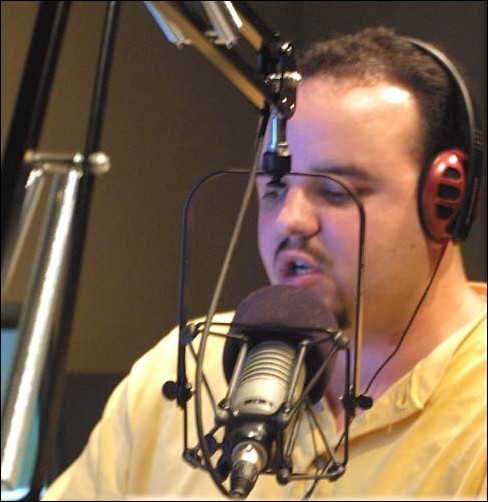Same old song

Image: Same old song:Cuitlahuac Sanchez/State HornetCapital Public Radio disc jockey Bruce Callison speaks during a public announcement at CPR’s new station on Sacramento State’s campus.:
March 24, 2004
Capital Public Radio has relocated to the Sacramento State campus, but their broadcast studios will remain off-limits to students.
It has been over a year since construction began on the southeast corner of the Sac State campus to house Capital Public Radio. What had originally begun as a student-run radio station a quarter-century ago is now a multimillion-dollar “non-profit” business.
“We are not here to program for the students,” said Michael H. Lazar, Capital Public Radio president and general manager.
Although students will not have direct access to the broadcast studios, Lazar mentioned the various non-paid internships that are offered at Capital Public Radio. These include human resources, finance, engineering, public relations, marketing, journalism and fund raising.
Lazar mentioned that, traditionally, Sac State students have not taken advantage of the internship opportunities offered at Capital Public Radio. “We have more students from other colleges and high schools than Sac State students,” Lazar said. “We are criticized for not having enough (Sac State) students but we cannot force them to come in.”
KSSU Student Manager Rafael Chavez feels that Sacramento State President Alexander Gonzalez needs to address the issue of students not being allowed access to the CPR broadcast studios. Chavez acknowledges that CPR was originally hired by the university to operate the station and was not obliged to deal with students.
“Internships don’t do anything for you if you’re never heard on the airways,” Chavez said.
However, professor of communication studies and former department chairwoman Barbara O’Connor said, Capital Public Radio’s FCC license is not owned by Sac State but by the California State University Board of Trustees. O’Connor said, the university hired a man named to Stu Wilber to operate the student-run radio station and it was his decision to fire the students working at the station.
What is today Capital Public Radio originally began as a student-operated radio station at Sac State in 1970 under the call letters KERS.
The station received $9,700 a year in funding through the Sac State Communications Department and operated out of the theater arts building. In the late 1970’s, student access to the KERS broadcast studio was restricted. The station would eventually turn into what is today KXPR, now managed by Capital Public Radio.
KSSU, which operates out of the Student Union at 1580 AM, became Sac State’s answer to a student radio station after KERS turned into KXPR. The university does not need an FCC license for KSSU to operate because it only operates at three watts, and can only be heard within the vicinity of the Sac State campus. According to the College Music Journal, KSSU is the second smallest college radio station, power-wise, in the United States.
In March 1977, the Sacramento Bee published an article concerning a homosexual program being aired on KERS on Wednesday nights. Tim Farley, the KERS student manager, received numerous complains about the program, according to the Bee’s article.
In May 1977, former Sac State President James G. Bond responded to several written complaints demanding the homosexual program be removed from KERS broadcasting. Bond wrote, “While both you and I may find certain subject distasteful, me must, as a matter of law conscience protect the rights of individuals to voice their beliefs.”
“I don’t think the university made the decision (to remove students from KERS),” O’Connor said.
O’Connor was the department chair of communication studies during the KERS transition into KXPR.
O’Connor recalls various complaints from the community about several of the programs being aired on KERS. There were also African American and Chicano programs that sparked controversy.
O’Connor said, radio stations need a certain number of full-time staff members to eventually become qualified to carry National Public Radio broadcasting. Also, in order for Sac State to receive grants from National Public Radio and federal funding from the Corporation for Public Broadcasting, the community needed to be pleased by the programs being aired. O’Connor believes that students were removed from KERS over money.
“I don’t see why KXPR could not have a vibrant student internship program with the communication and business departments,” O’Connor said. “Students say they get better internships at other commercial stations.”
Approximately 70 student volunteers are currently involved in KSSU.Capital Public Radio’s budget for the current fiscal year is $4.8 million.”Capital Public Radio is making a lot of money for the university and students are not getting a piece of the pie,” Chavez said.













































































































































